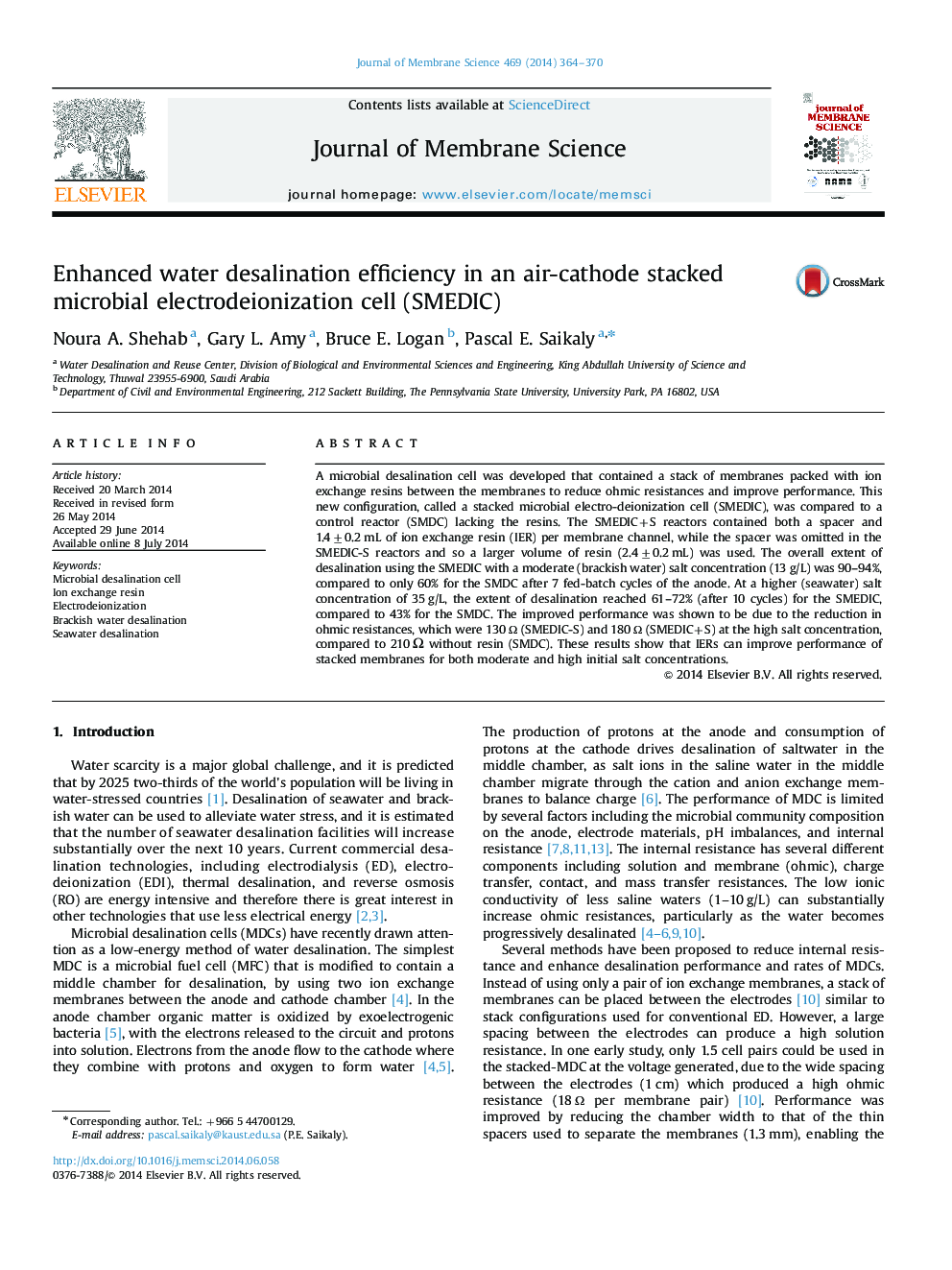| Article ID | Journal | Published Year | Pages | File Type |
|---|---|---|---|---|
| 633512 | Journal of Membrane Science | 2014 | 7 Pages |
•Ion exchange resins (IERs) between membranes improved desalination performance.•Desalination rates for systems with IERs were 1.9–2.2 times those without IERs.•Improved desalination extent was due to the reduction in membrane stack resistance.•The use of IERs rather than spacers is useful even at high initial salt concentrations.
A microbial desalination cell was developed that contained a stack of membranes packed with ion exchange resins between the membranes to reduce ohmic resistances and improve performance. This new configuration, called a stacked microbial electro-deionization cell (SMEDIC), was compared to a control reactor (SMDC) lacking the resins. The SMEDIC+S reactors contained both a spacer and 1.4±0.2 mL of ion exchange resin (IER) per membrane channel, while the spacer was omitted in the SMEDIC-S reactors and so a larger volume of resin (2.4±0.2 mL) was used. The overall extent of desalination using the SMEDIC with a moderate (brackish water) salt concentration (13 g/L) was 90–94%, compared to only 60% for the SMDC after 7 fed-batch cycles of the anode. At a higher (seawater) salt concentration of 35 g/L, the extent of desalination reached 61–72% (after 10 cycles) for the SMEDIC, compared to 43% for the SMDC. The improved performance was shown to be due to the reduction in ohmic resistances, which were 130 Ω (SMEDIC-S) and 180 Ω (SMEDIC+S) at the high salt concentration, compared to 210 Ω without resin (SMDC). These results show that IERs can improve performance of stacked membranes for both moderate and high initial salt concentrations.
